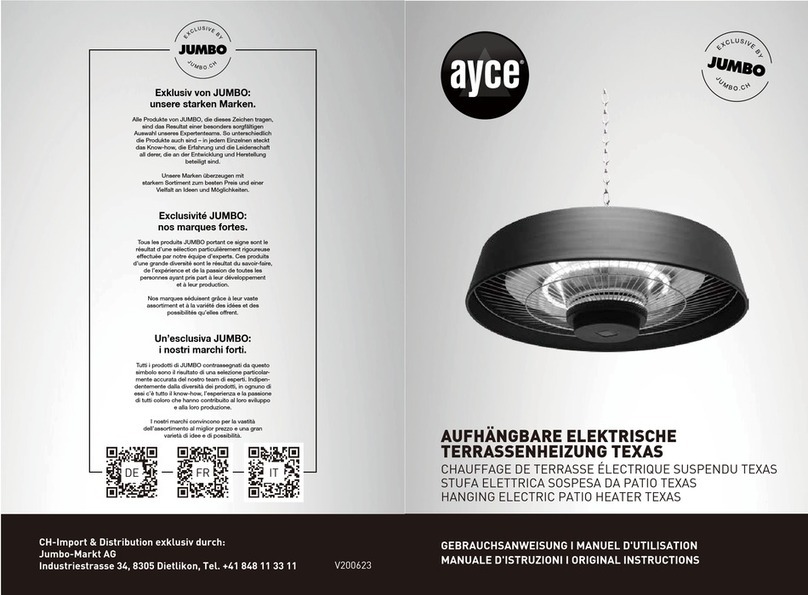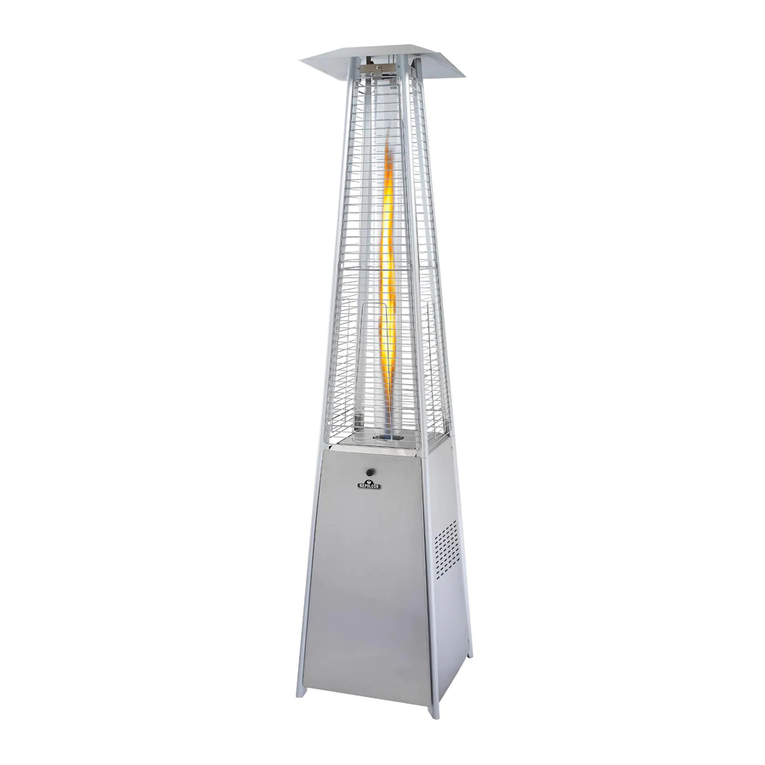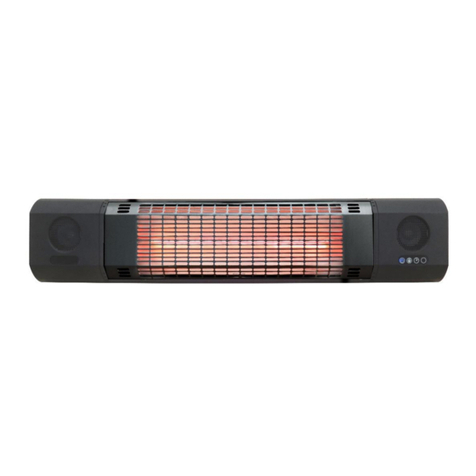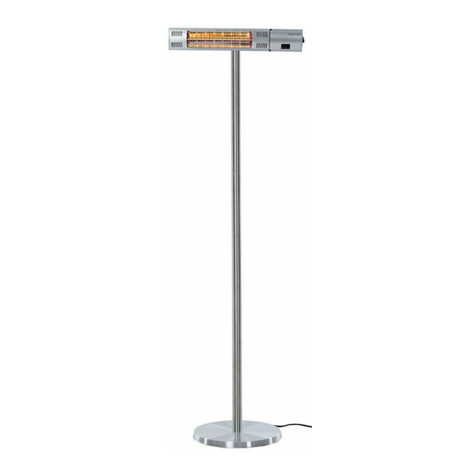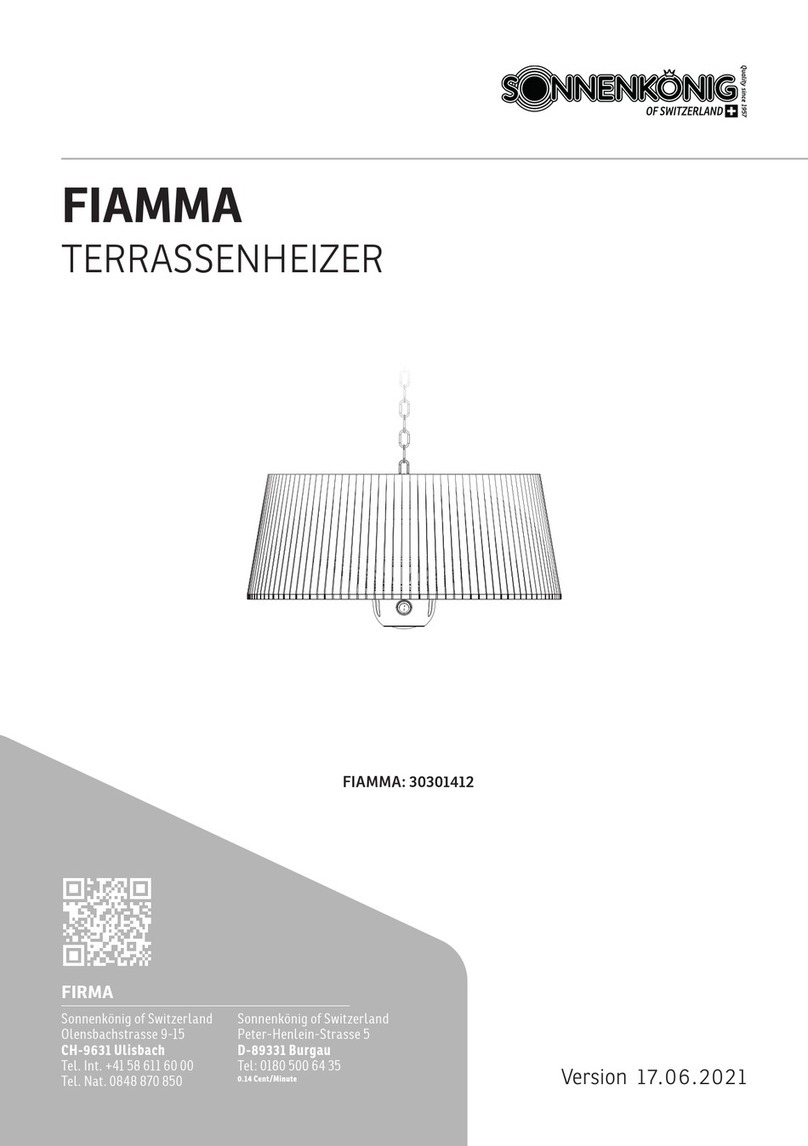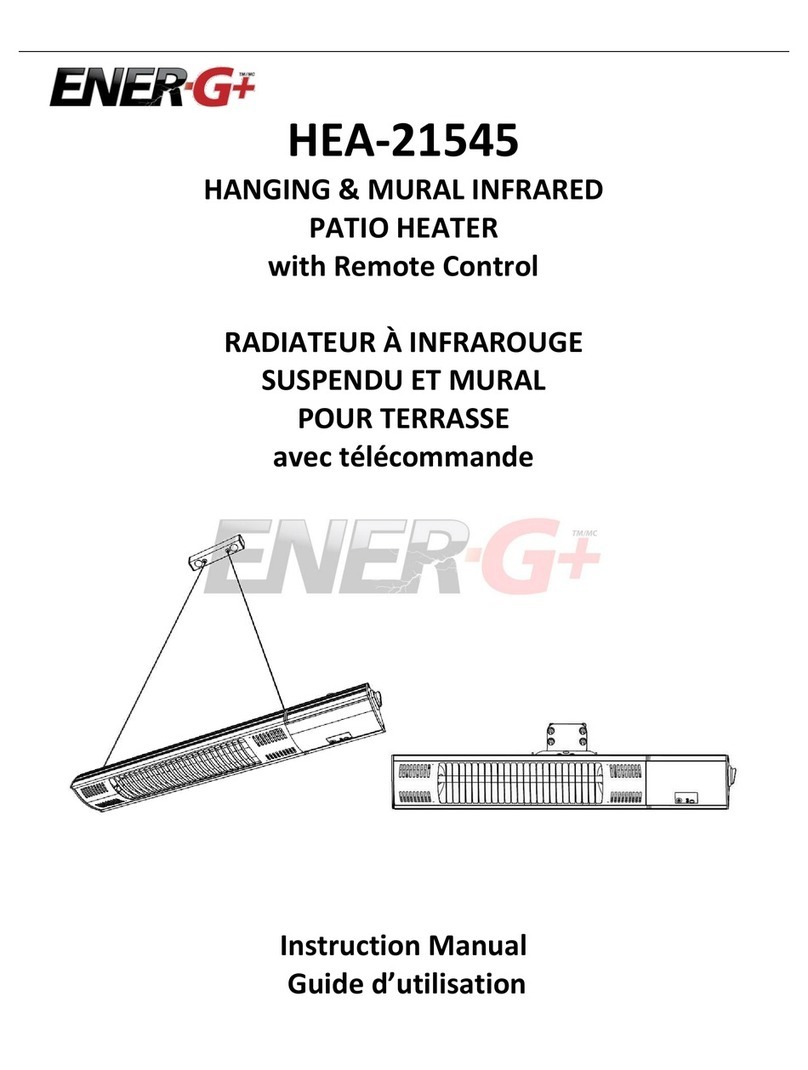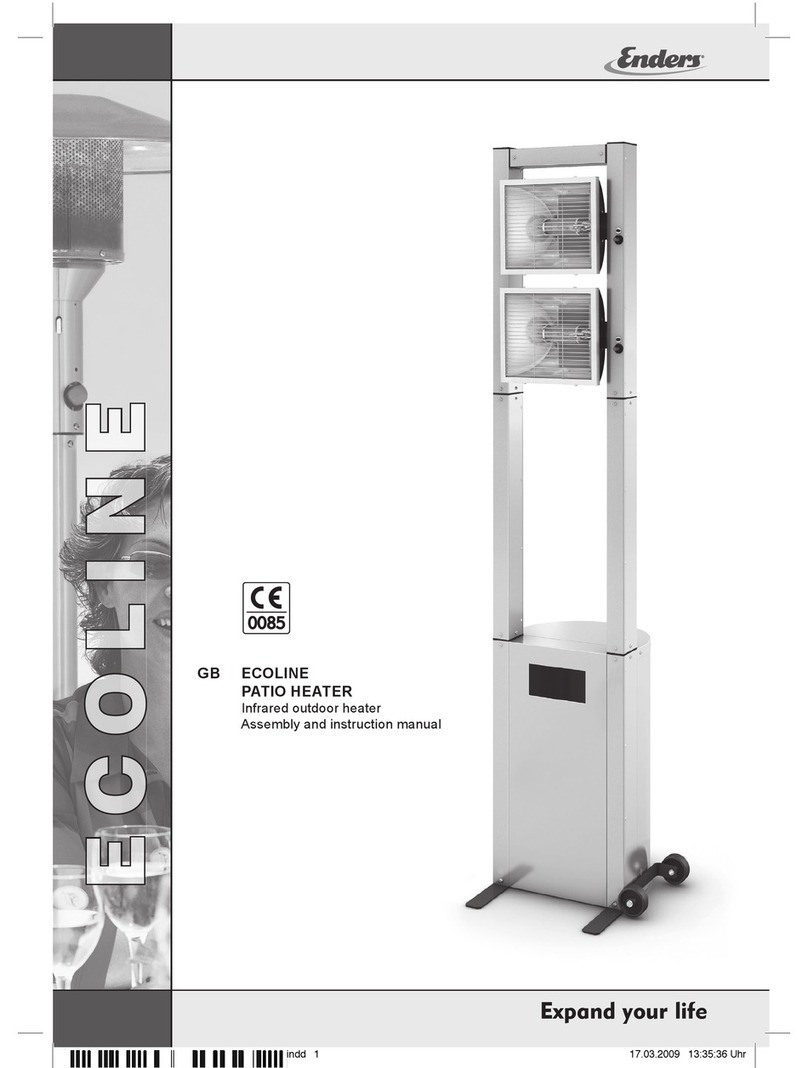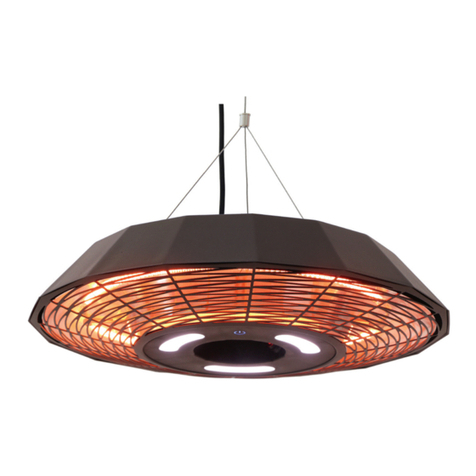Lava Heat OPUS LITE User manual


Questions, problems, missing / replacement parts? Before returning to your retailer,
call our customer service department at 1.888.779.5282, 10 a.m.- 6:00 p.m., PST,
OPUS LITE
1
US
R
C
RR
Owner’s
Manual
DANGER
If you smell gas:
1. Shut off gas to the appliance.
2. Extinguish any open flame.
3. If odor continues, keep away from the appliance and
immediately call you gas supplier or fire department.
WARNING
Do not store or use gasoline or other flammable vapors
and liquids in the vicinity of this or any other appliance.
An LP-cylinder not connected for use shall not be
stored in the vicinity of this or any other appliance.
WARNING
Improper installation, adjustment, alteration, service or
maintenance can cause property damage, injury or death.
Read the installation, operation and maintenance
instructions thoroughly before installing or servicing this
equipment.
WARNING: For Outdoor Use Only
WARNING
WARNING indicates an imminently hazardous situation
which, if not avoided, will result in death or serious injury.

PACKAGE CONTENTS
2
NOITPIRCSED TRAP QUANTITY
A
Reflector
1
B
Emitter
Reflector
Emitter
Support
Protective Guard
1
C
Support
D
Protective Guard
E
Borosilicate Glass Tube
F
Burner Ignition Plate
3
3
1
1
G1
H1
I
Wheel Kit
Front Door Panel
Gas Hose & Regulator
Control Box Casing
1
J
K
Base plate
L
1
1
1
A
B
C
D
Borosilicate Glass Tube
E
Control Box Casing
FBurner Ignition Plate
G
Back Panel
K
Bottom plate
J
Wheel Kit
Back Panel
I
Front Door Panel
HGas Hose & Regulator
L
Hi
Lo
Pilot
Igniter

INCLUDED HARDWARE
ADDITIONAL REQUIRED HARDWARE
3
SAFETY INFORMATION
Please read and understand this entire manual before attempting to assemble, operate or install
the product.
This manual contains important information about the assembly, operation and maintenance of
this patio heater. General safety information is presented in these first few pages and is also
located throughout the manual. Keep this manual for future reference and to educate new users
of this product. This manual should be read in conjunction with the labeling on the product. Safety
precautions are essential when any mechanical or propane fueled equipment is involved. These
precautions are necessary when using, storing, and servicing. Using this equipment with the
respect and caution demanded will reduce the possibilities of personal injury or property damage.
The following symbols shown below are used extensively throughout this manual. Always heed
these precautions, as they are essential when using any mechanical or fueled equipment.
DANGER
DANGER indicates an imminently hazardous situation
which, if not avoided, will result in death or serious injury.
DANGER
Failure to comply with the precautions and instructions
provided with this heater can result in death, serious
bodily injury and property loss or damage from
hazards of fire, explosion, burn, asphyxiation, and/or
carbon monoxide poisoning. Only persons who can
understand and follow the instructions should use or
service this heater.
CAUTION
An appliance may be in stalled with shelter no more
inclusive than:
(a) With walls on all sides, but with no overhead cover.
(b) Within a partial enclosure which includes an overhead
cover and no more than two side walls. These side walls
may be parallel, as in a breezeway, or at right angles to
each other.
(c) Within partial enclosure which includes an overhead
cover and three side walls, as long as 30 percent or
more of the horizontal periphery of the enclosure is
permanently open.
OO
Wrench
Qty. 1
EE
Bolt Ø10 ×15mm
Qty. 2
HH
Nut M8
Qty. 2
DD
Screw Ø8×15 mm
Qty. 10

4
SAFETY INFORMATION
DANGER
WARN
DANGER
DANGER
DANGER

5
PREPARATION
Before beginning assembly of product, make sure all parts are present. Compare parts with
package contents list and hardware contents above. If any part is missing or damaged, do not
attempt to assemble the product. Contact customer service for replacement parts.
Estimated Assembly Time: 15 minutes
Tools Required for Assembly (not included):
Phillips screwdriver w/ medium blade. Leak Detection Solution.
WARNING
California Proposition 65
Combustion by-products produced when using
this product contain chemicals known to the State
of California to cause cancer, birth defects, and
other reproductive harm.
WARNING
BURN HAZARD
WARNING
is invisible, odorless, and flammable. An odorant is
normally added to help detect leaks and can be
described as a “rotten egg” smell. The odorant can
fade over time so leaking gas is not always detectable
by smell alone.
will sink to the lowest level possible. It can ignite by
ignition sources including matches, lighters, sparks or
open flames of any kind many feet away from the
original leak. Use only propane gas set up for vapor
withdrawal.
ordinances and codes or with ANS/NFPA 58. Turn off
propane when not in use.
WARNING
temperatures. Stay away from these surfaces to avoid
burning skin or igniting clothing.
of the heater.
from the heater, or place on or near the heater.
servicing the appliance prior to placing back in service.
service person. The heater should be inspected
before use and annually by a qualified service person.
More frequent cleaning may be required as necessary.
It is imperative that the control compartment, burners,
and circulating air passageway of the appliance be
kept clean.
SAFETY INFORMATION
CAUTION
which, if not avoided, may result in minor or moderate
personal injury, or property damage.
CAUTION
SERVICE SAFETY
propane cylinder valve outlet is clean.
leaks using soapy water. Never use a flame.
way or use with any device.
WARNING
Certain materials or items, when stored under the
heater, will be subjected to radiant heat and could be
seriously damaged.

6
ASSEMBLY INSTRUCTIONS
Top portion
Bottom panels
Base plate
Wheel kit
Hardware Used
2
1
1. Heater is partially preassembled at the
factory. User needs to complete a couple of
assembly procedures to make the appliance
operational. First, please ensure all transit
protection (foam, cardboard, buuble wrap,
etc.) is removed. Next identify the 4 main
items listed and illustrated to the right.
2. Install wheel kit to base plate by inserting
(2) x Bolt Ø10 ×15mm through the wheel kit
and base plate and securing them with (2) x
Nut M8 (use supplied wrench to tighten).
Top View
OO
Wrench
Qty. 1
EE
Bolt Ø10 ×15mm
Qty. 2
HH
Nut M8
Qty. 2

3. Align bottom panel on top of base plate
and connect them together by securely
installing (5) M5 X 12 screws through the
designated 90 degree metal brackets with a
philips screwdriver.
4. Align top portion on top of bottom panel
and connect them together by securely
installing (5) M5 X 12 screws through the
designated 90 degree metal brackets with a
philips screwdriver.
7
ASSEMBLY INSTRUCTIONS
3
Hardware Used
DD x 5
x 1
PP Philips
screwdriver
4
Screw Ø8×15 mm
Hardware Used
DD x 5
x 1
PP Philips
screwdriver
Screw Ø8×15 mm

8
ASSEMBLY INSTRUCTIONS
Hardware Used
MM
MM
D
x 4
x 1
PP Philips
screwdriver
Screw Ø8×10 mm
6
5
5.You will need to remove at least one of the
three protective steel guards (D) in order to
safely remove the bubble rap and foam
material from the boroscilate glass tube
located in the center of the unit. Unscrew all
(4) of the MM Ø8×10 mms screws, then remove
the protective steel guard from its supports
slots. Now that you have properly and carefully
removed all transit protection materials from
the unit, you will need to place the unit back
in its original proper order.Re-Install the
protective steel guard (D) by hanging it on the
upper support slots. Next, tightly secure it with
all (4)of the MM Ø8×10 mm screws in to their
orginal support slots accordingly.
6. Propane Only-Proper Hose Connection.
WARNING! Ensure the hose does not contact
any high temperature surfaces, or it may melt
and leak causing a fire.

9
ASSEMBLY INSTRUCTIONS
7
Standard 20 lb. tank
7. Connect hose and regulator to cylinder.
The propane gas and cylinder are sold separately.
Use a standard 20 lb. propane cylinder only.
Use this heater only with a propane vapor withdrawal
supply system. See chapter 12 of the standard for
storage and handling of liquefied petroleum gas,
ANSI/NFPA 58 or CSA B149.1, Natural Gas and
Propane Installation Code. Your local library or fire
department should have this book.
Storage of an appliance indoors is permissible only if
the cylinder is disconnected and removed from the
appliance. A cylinder must be stored outdoors in a
well-ventilated area out of the reach of children. A
disconnected cylinder must have dust caps tightly
installed and must not be stored in a building, garage
or any other enclosed area. The maximum inlet gas
supply pressure: 250 psi, The minimum inlet gas
supply pressure: 5 psi. is required for purpose of input
adjustment. The minimum hourly of 16000 Btu/hr is
required input rating for a heater at ratings less than
full input rating. The pressure regulator and hose
assembly supplied with the appliance must be used.
The installation must conform with local codes, or in
the absence of local codes,with national fuel gas code,
ANSI Z223.1/NFPA54, natural gas and propane Instal-
lation Code, CSA B149.1, or propane storage and
handling code, B149.2.

10
OPERATION INSTRUCTIONS
DANGER
Note: This heater is equipped with a pilot light that allows for safer startups and shutdowns. Pilot must
be lit before main burner can be started.
Figure 1)
Note: For initial start or after any cylinder change, hold control knob in for 2 minutes to purge air from
gas lines before proceeding.
Caution: Do not attempt to operate until you have read and understand all General Safety Information
in this manual and all assembly is complete and leak checks have been performed.
Figure 1 Figure 2

11
OPERATION INSTRUCTIONS
4. Push and release the igniter button until pilot flame is visible through
the glass tube.
5. Once the pilot is lit, continue to depress the control knob for 30 seconds.
6. If the pilot does not stay lit, repeat steps 4 to 6.
7. If after repeating steps 4 to 6 unit does not light, then
-Push in control knob and turn counterclockwise to “PILOT” (Figure 3).
-As you are depressing the control knob, place long stem lighter
through the glass tube to light the pilot (Figure 4).
-Repeat step 6.
8. Push in and turn the control knob to the “HIGH”, then release
control knob. If you want a lower temperature, push in the control knob
and turn counterclockwise to the “LOW” (Figure 5).
Note: If pilot fails to remain lit, all valves should be closed and a waiting
period of at least 5 minutes should pass before attempting to light.
If you experience any ignition problem please consult “Troubleshooting” on page 18.
Caution: Avoid inhaling fumes emitted from the heater’s first use. Smoke and odor from the burning
of oils used in manufacturing will appear. Both smoke and odor will dissipate after approximately 30
minutes. The heater should NOT produce thick black smoke.
Note: The burner may be noisy when initially turned on. To eliminate excessive noise from the burner,
turn the control knob to the PILOT position. Then, turn the knob to the level of heat desired.
Figure 3 Figure 4 Figure 5
Igniter Variable
control knob
Normal Abnormal
Note:
In Normal condition,
the height of flame
is 2/3 height of glass
tube under Hi position.
the height of flame is
1/3 height of glass
tube under Low
position.The flame is
stable and bright.
No noise nor black
smoke.Contrarily it is
abnormal condition.
11

12
OPERATION INSTRUCTIONS
Shut Down:
1. Turn control knob clockwise to PILOT. (Normally, burner will make a slight popping sound when
extinguished.) Burner will extinguish but PILOT will remain ON.
2. To extinguish PILOT depress control knob and continue to turn it clockwise to OFF.
3. Turn cylinder valve clockwise to OFF and disconnect regulator when heater is not in use.
Note: After use, some discoloration of the emitter screen is normal.
Operation Checklist
For a safe and pleasurable heating experience, perform this check before each use.
Before Operating:
1. I am familiar with entire owner’s manual and understand all precautions noted.
2. All components are properly assembled, intact and operable.
3. No alterations have been made.
4. All gas connections are secure and do not leak.
5. Wind velocity is below 10 mph.
6. Unit will operate at reduced efficiency below 40°F.
7. Heater is outdoors (outside any enclosure).
8. There is adequate fresh air ventilation.
When heater is ON:
The flame should be blue with straight yellow tops. If excessive yellow flame is detected, turn off
heater and consult “Troubleshooting” on page 18.
Re-lighting:
Note: For your safety, control knob cannot be turned OFF without first
depressing control knob in PILOT position and then rotating it to OFF.
1. Turn control knob to OFF.
2. Wait at least 5 minutes, to let gas dissipate, before attempting to relight Pilot, if do not wait at
least 5 minutes, flash out will happen badly.
3. Repeat the “Lighting” steps on prior page.
WARNING
FOR YOUR SAFETY
Be careful when attempting to manually ignite this
heater. Holding in the control knob for more than 20
seconds before igniting the gas will cause a ball of
flame upon ignition.
WARNING
FOR YOUR SAFETY
Heater will be hot after use. Handle with extreme care.

13
OPERATION INSTRUCTIONS
CARE AND MAINTENANCE
9. Heater is away from gasoline or other flammable liquids or vapors.
10. Heater is away from windows, air intake openings, sprinklers and other water sources.
11. Heater is at least 24 in. on top and at least 36 in. on sides from combustible materials.
12. Heater is on a hard and level surface.
13. There are no signs of spider or insect nests.
14. All burner passages are clear.
15. All air circulation passages are clear.
16. Children and adults should be alerted to the hazards of high surface temperatures and should
stay away to avoid burns or clothing ignition.
17. Young children should be carefully supervised when they are in the area of the heater.
18. Clothing or other protective material should not be hung from the heater, or placed on or near the
heater.
19. Any guard or other protective device removed for servicing the heater must be replaced prior to
operating the heater.
20. Installation and repair should be done by a qualified service person. The heater should be
inspected before use and at least annually by a qualified service person.
21. More frequent cleaning may be required as necessary. It is imperative that control compartment,
burner and circulating air passageways of the heater be kept clean.
After Operation
1. Gas control is in OFF position.
2. Gas Tank valve is OFF.
3. Disconnect Gas cylinder.
WARNING
FOR YOUR SAFETY:
after use.
To enjoy years of outstanding performance from your heater, make sure you perform the following
maintenance activities on a regular basis:
Keep exterior surfaces clean.
1. Use warm soapy water for cleaning. Never use flammable or corrosive cleaning agents.
2. While cleaning your unit, be sure to keep the area around the burner and pilot assembly dry at all
times. Do not submerge the control valve assembly. If the gas control is submerged in water, do
NOT use it. It must be replaced.
a. Keep the appliance area clear and free from combustible materials, gasoline and other
flammable vapors and liquids.
b. Do not obstruct the flow of combustion and ventilation air.
c. Keep the ventilation opening(s) of the cylinder enclosure free and clear from debris.
3. Air flow must be unobstructed. Keep controls, burner, and circulating air passageways clean.
Signs of possible blockage include:

14
CARE AND MAINTENANCE
Gas odor with extreme yellow tipping of flame.
Heater does NOT reach the desired temperature.
Heater glow is excessively uneven.
Heater makes popping noises.
Spiders and insects can nest in burner or orifices. This dangerous condition can damage heater and
render it unsafe for use. Clean burner holes by using a heavy-duty pipe cleaner. Compressed air may
help clear away smaller particles.
Carbon deposits may create a fire hazard. Disassembly the reflector, unscrew the reflector spacer,
take off the screen, take down one side of protective guards. Then take the glass tube from the heater
and wash and clear. After that assembly the glass tube and the rest of parts.
Note: In a salt-air environment (such as near an ocean), corrosion occurs more quickly than normal.
Frequently check for corroded areas and repair them promptly.
TIP:
Use high-quality automobile wax to help maintain the appearance of
your heater. Apply to exterior surfaces from the pole down. Do not
apply to emitter screen or domes.
Storage
Between uses:
Turn Control Knob OFF.
Disconnect LP cylinder.
Store heater upright in an area sheltered from direct contact with inclement weather (such as rain,
sleet, hail, snow, dust and debris).
If desired, cover heater to protect exterior surfaces and to help prevent build-up in air passages.
Note: Wait until heater is cool before covering.
During periods of extended inactivity or when transporting:
Turn Control Knob OFF.
Disconnect LP cylinder and move to a secure, well-ventilated location outdoors.
Store heater upright in an area sheltered from direct contact with inclement weather (such as rain,
sleet, hail, snow, dust and debris).
If desired, cover heater to protect exterior surfaces and to help prevent build-up in air passages.
Never leave LP cylinder exposed to direct sunlight or excessive heat.
Note: Wait until heater is cool before covering.
Service
Only a qualified service person should repair gas passages and associated components.
Caution: Always allow heater to cool before attempting service.

15
TROUBLESHOOTING
PROBLEM POSSIBLE CAUSE CORRECTIVE ACTION
Pilot won’t light
Pilot won’t stay lit
Burner won’t light
Burner flame is low
Carbon build-up
Thick black smoke
Cylinder valve is closed Open valve
Blockage in orifice or pilot tube
Air in gas line
Low gas pressure with cylinder valve
fully open
Igniter fails
Propane cylinder is frosted over
Blockage in orifice
Control knob is not in ON position
Gas pressure is low
Control knob fully ON
Dirt or film on reflector and burner screen
Blockage in burner Remove blockage and clean burner
inside and outside
Check burner and orifices for
blockage
Clean reflector and burner screen
Outdoor temperature is less than 40ºF and
tank is less than 1/4 full
Turn cylinder valve OFF and replace
cylinder
Use a full cylinder
Turn control knob to ON
Dirt built up around pilot
Connection between gas valve and pilot
assembly is loose
Thermocouple is not operating correctly
Clean or replace orifice or
pilot tube
Open gas line and bleed it
(pressing control knob in) for not
more than 1 - 2 minutes or until
you smell gas
Turn cylinder valve OFF and replace
cylinder
Use match to light pilot; obtain new
igniter and replace
Clean dirt from around pilot
Tighten connection and perform
leak check
Replace thermocouple
Wait until the propane cylinder
warms up and becomes unfrosted
Clear blockage
Note: Heater operates
at reduced efficiency
below 40ºF (5ºC)

Table of contents
Other Lava Heat Patio Heater manuals

Lava Heat
Lava Heat Verona User manual
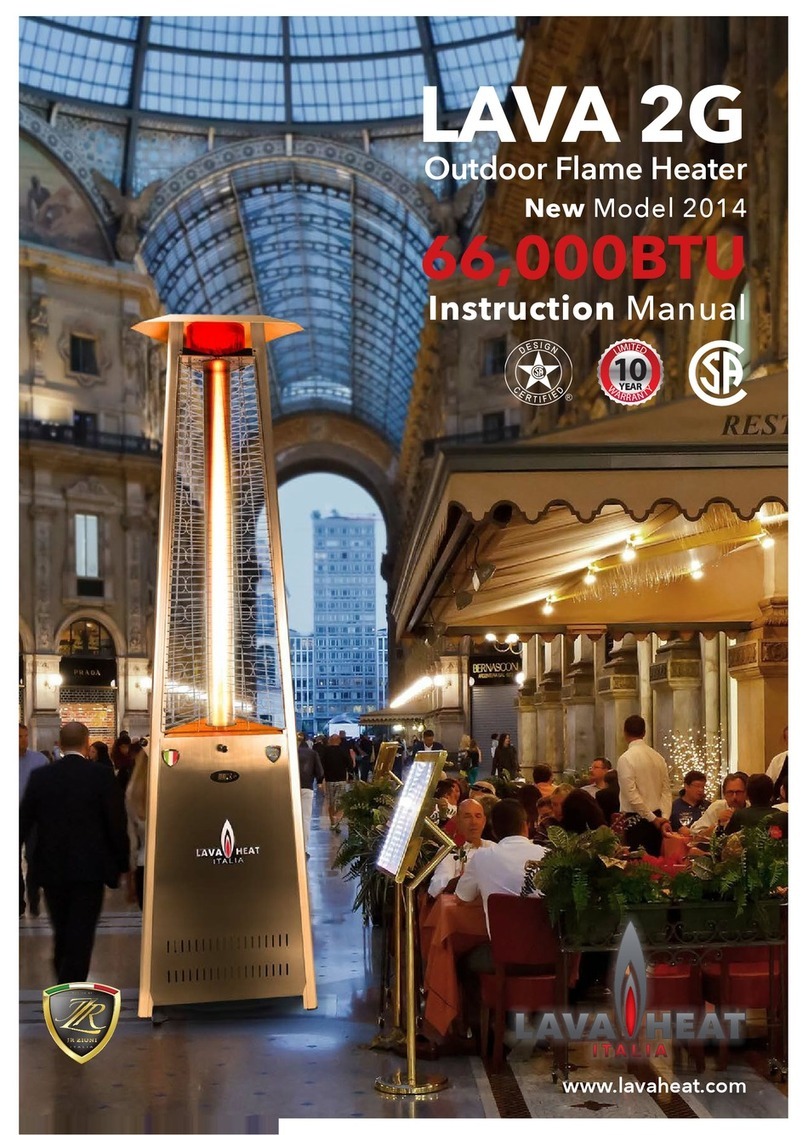
Lava Heat
Lava Heat Lava 2G User manual
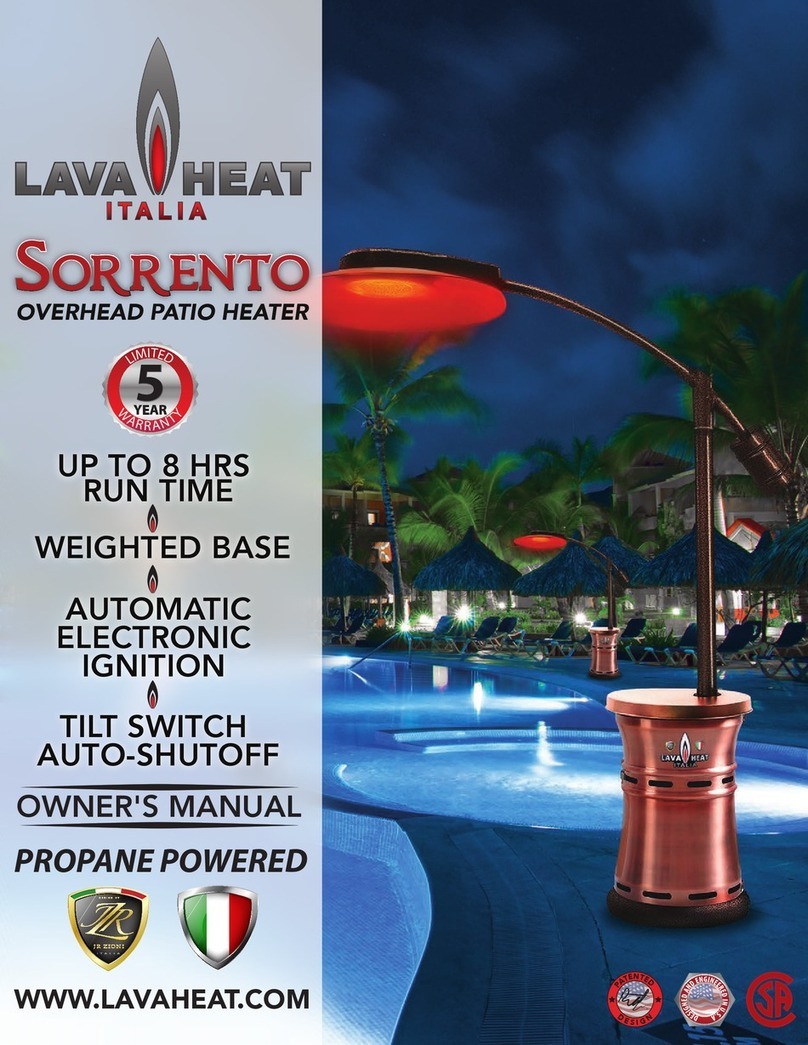
Lava Heat
Lava Heat SORRENTO User manual

Lava Heat
Lava Heat Opus User manual
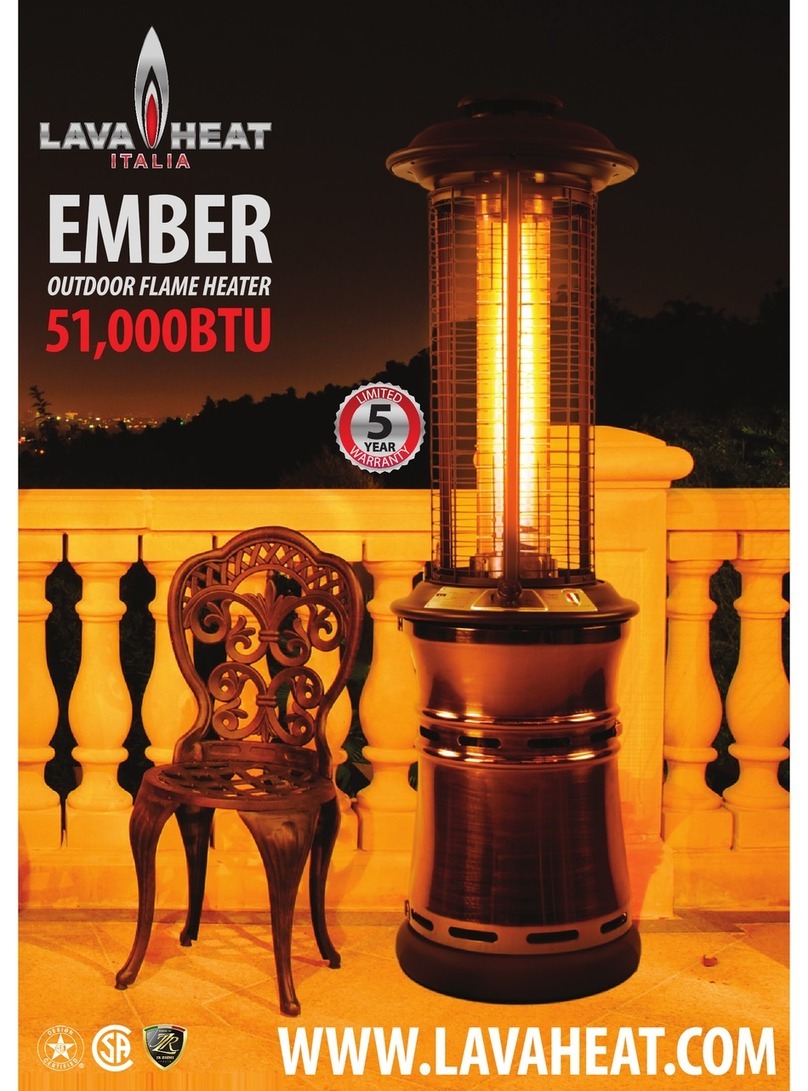
Lava Heat
Lava Heat Ember User manual

Lava Heat
Lava Heat Venetian User manual
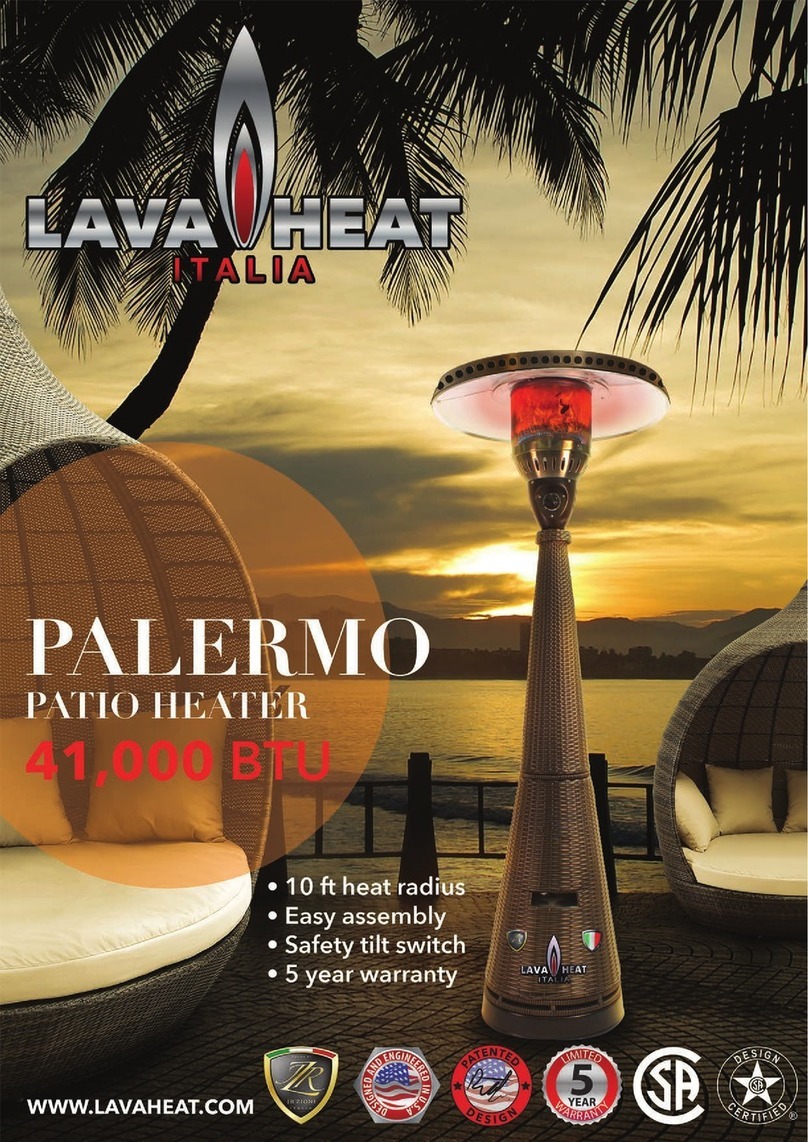
Lava Heat
Lava Heat PALERMO User manual

Lava Heat
Lava Heat MINI LAVA User manual

Lava Heat
Lava Heat SRPH30-XXXX ALTO User manual
Popular Patio Heater manuals by other brands
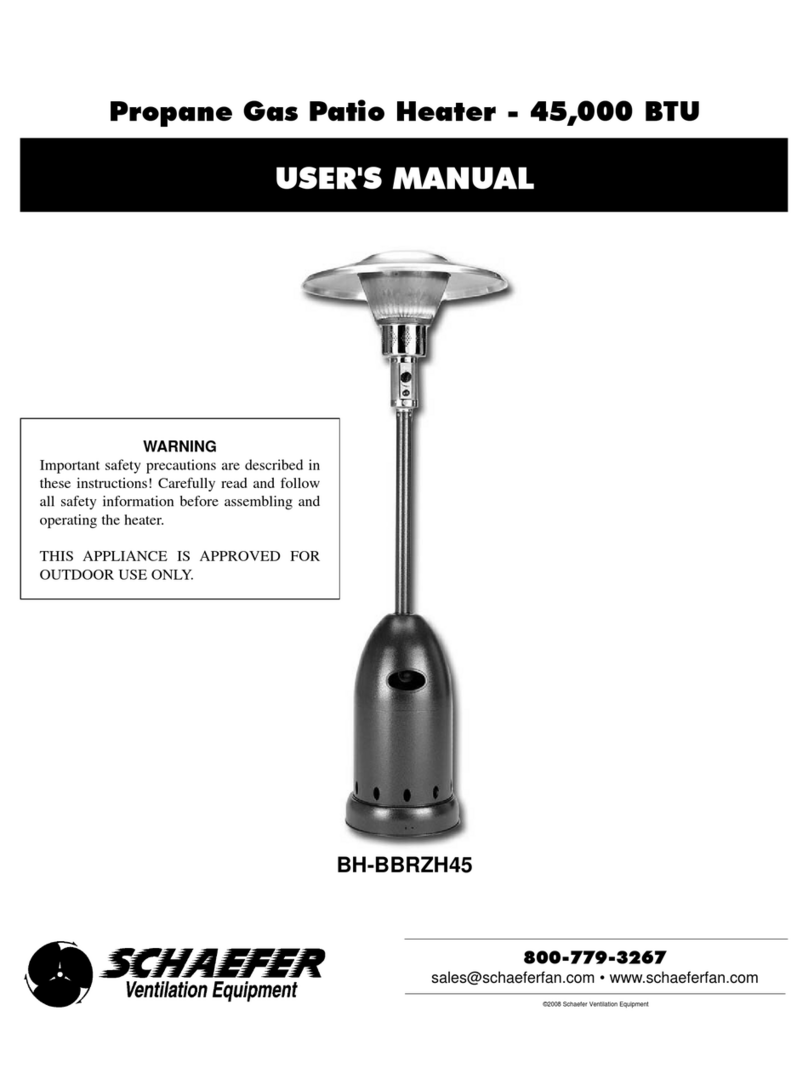
Schaefer
Schaefer BH-BBRZH45 user manual

Heat Outdoors
Heat Outdoors Athena Plus+ Safety instructions and operation manual
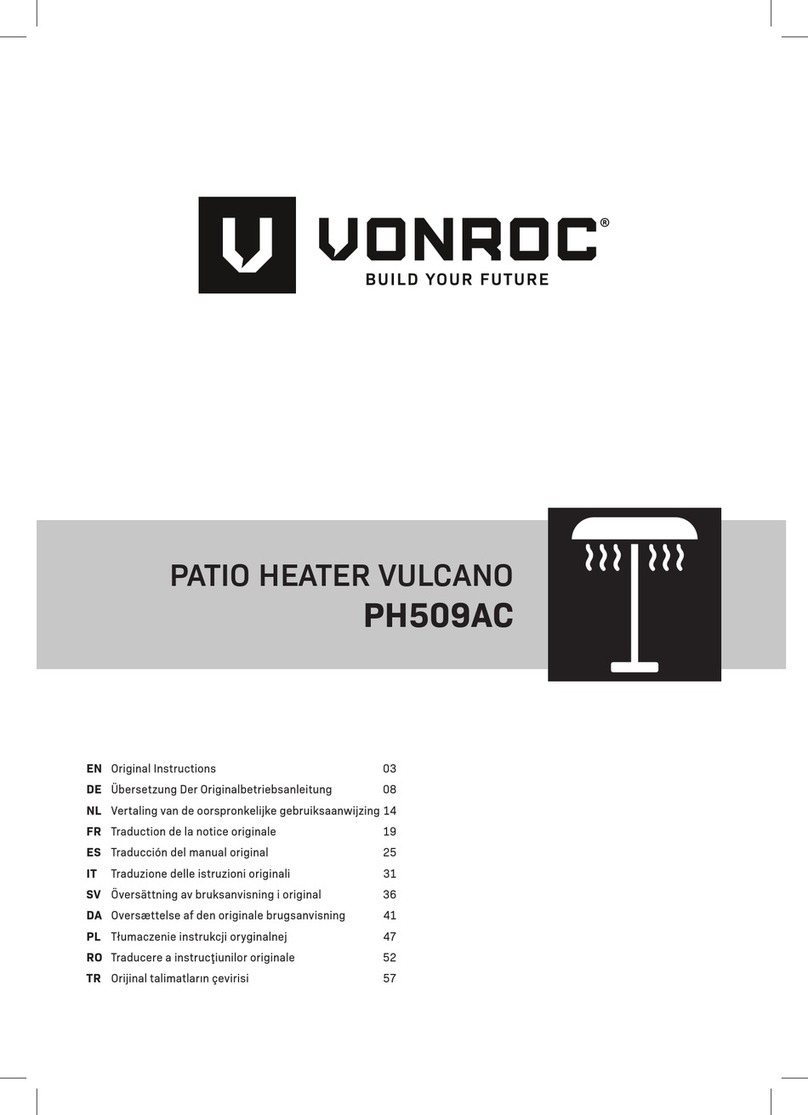
VONROC
VONROC VULCANO manual

HEATSTRIP
HEATSTRIP THH-AA Series product manual
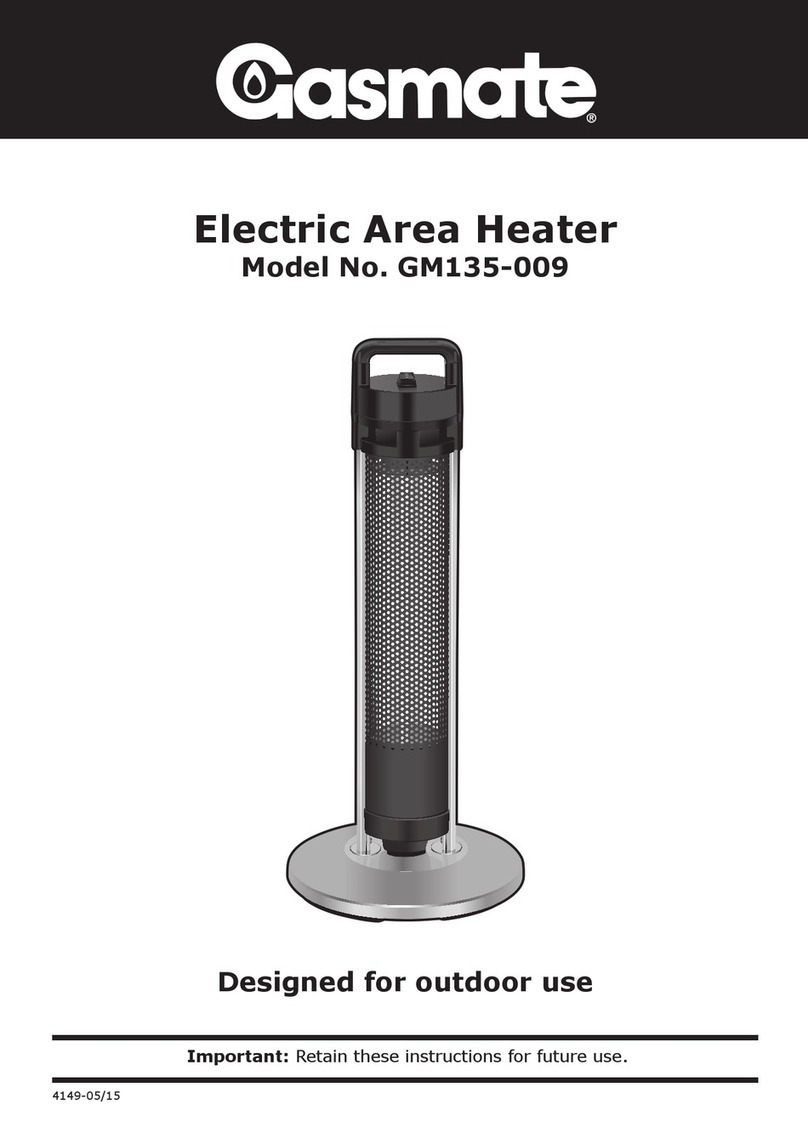
Gasmate
Gasmate GM135-009 Installation, operation and maintenance instructions
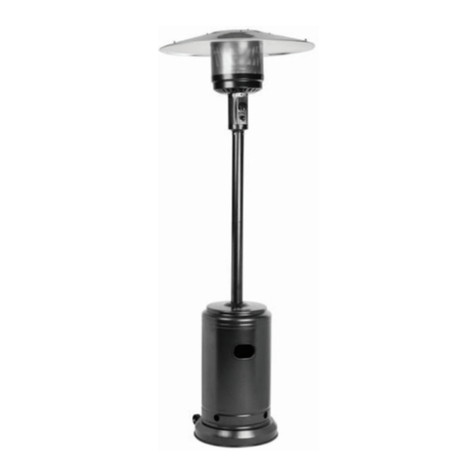
Amazon
Amazon B00LILH3V4 manual
